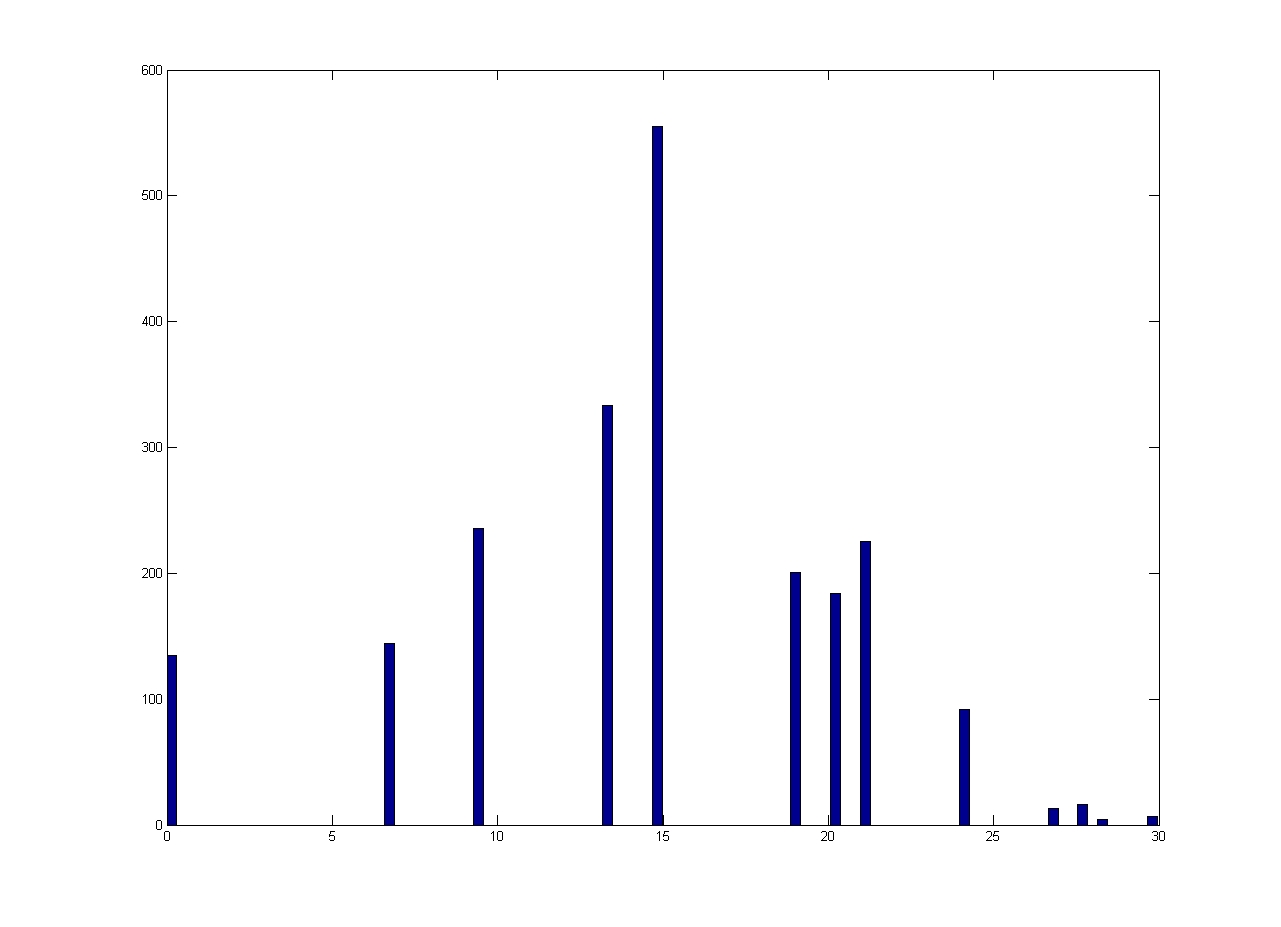Imperial College/11 September 2008
From 2008.igem.org
(Difference between revisions)
(→Dry Lab) |
(→Dry Lab) |
||
| Line 2: | Line 2: | ||
==Dry Lab== | ==Dry Lab== | ||
| + | [[Image:Velocity_Distribution.jpg|thumb|300px|right|Histogram of Velocity]] | ||
*Tracked 23 cells (most were just running) | *Tracked 23 cells (most were just running) | ||
*The figure below shows the velocity (per frame) distribution of cells. | *The figure below shows the velocity (per frame) distribution of cells. | ||
| Line 7: | Line 8: | ||
**Velocity distribution: In this method, we track cells, and obtain a plot of run velocity of the wild type cells. Upon known EpsE expression, we obtain another plot and compare the velocity distributions. This method focuses on EpsE acting to slow down the motility of ''B. subtilis''. | **Velocity distribution: In this method, we track cells, and obtain a plot of run velocity of the wild type cells. Upon known EpsE expression, we obtain another plot and compare the velocity distributions. This method focuses on EpsE acting to slow down the motility of ''B. subtilis''. | ||
**% of cells with swimming motility: In this method, we do not track cells, but count them over several frames to obtain the fraction of cells which are motile within a population. In this case we assume that when we combine the number of videos captured, it is representative of the entire population. If we see a significant drop in % of motile cells, we thus confirm EpsE's capability of disengaging the bacteria flagellar from its motor. | **% of cells with swimming motility: In this method, we do not track cells, but count them over several frames to obtain the fraction of cells which are motile within a population. In this case we assume that when we combine the number of videos captured, it is representative of the entire population. If we see a significant drop in % of motile cells, we thus confirm EpsE's capability of disengaging the bacteria flagellar from its motor. | ||
| - | + | *Since we are unable to successfully identify tumbling phase from running phase, we will only investigate its run velocity. Thus we will be extracting a series of frame-by-frame run velocities of each bacteria, and for each bacteria we take the mean of its velocity. Therefore, one bacteria contributes to only a single data point. | |
| + | *On the issue of which cells to track, we have decided to ignore dead cells, but we must take note of the % of cells with swimming motility. This excludes cells which drift. We have defined cells with swimming motility as '''cells which travel in the direction of their longitudinal axis'''. | ||
| + | *More cells will be tracked tomorrow and over the weekend. | ||
{{Imperial/EndPage}} | {{Imperial/EndPage}} | ||
Revision as of 19:09, 11 September 2008
Dry Lab
|
 "
"

